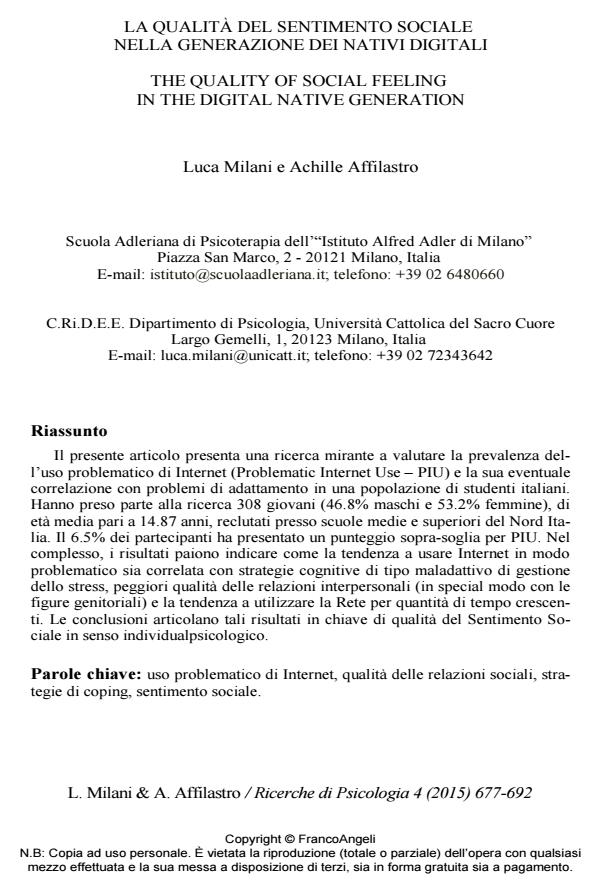La qualità del sentimento sociale nella generazione dei nativi digitali
Titolo Rivista RICERCHE DI PSICOLOGIA
Autori/Curatori Luca Milani, Affilastro Achille
Anno di pubblicazione 2016 Fascicolo 2015/4
Lingua Italiano Numero pagine 16 P. 677-692 Dimensione file 83 KB
DOI 10.3280/RIP2015-004006
Il DOI è il codice a barre della proprietà intellettuale: per saperne di più
clicca qui
Qui sotto puoi vedere in anteprima la prima pagina di questo articolo.
Se questo articolo ti interessa, lo puoi acquistare (e scaricare in formato pdf) seguendo le facili indicazioni per acquistare il download credit. Acquista Download Credits per scaricare questo Articolo in formato PDF

FrancoAngeli è membro della Publishers International Linking Association, Inc (PILA)associazione indipendente e non profit per facilitare (attraverso i servizi tecnologici implementati da CrossRef.org) l’accesso degli studiosi ai contenuti digitali nelle pubblicazioni professionali e scientifiche
Il presente articolo presenta una ricerca mirante a valutare la prevalenza dell’uso problematico di Internet (Problematic Internet Use – PIU) e la sua eventuale correlazione con problemi di adattamento in una popolazione di studenti italiani. Hanno preso parte alla ricerca 308 giovani (46.8% maschi e 53.2% femmine), di età media pari a 14.87 anni, reclutati presso scuole medie e superiori del Nord Italia. Il 6.5% dei partecipanti ha presentato un punteggio sopra-soglia per PIU. Nel complesso, i risultati paiono indicare come la tendenza a usare Internet in modo problematico sia correlata con strategie cognitive di tipo maladattivo di gestione dello stress, peggiori qualità delle relazioni interpersonali (in special modo con le figure genitoriali) e la tendenza a utilizzare la Rete per quantità di tempo crescenti. Le conclusioni articolano tali risultati in chiave di qualità del Sentimento Sociale in senso individualpsicologico.
Parole chiave:Uso problematico di Internet, qualità delle relazioni sociali, strategie di coping, sentimento sociale.
Luca Milani, Affilastro Achille, La qualità del sentimento sociale nella generazione dei nativi digitali in "RICERCHE DI PSICOLOGIA " 4/2015, pp 677-692, DOI: 10.3280/RIP2015-004006